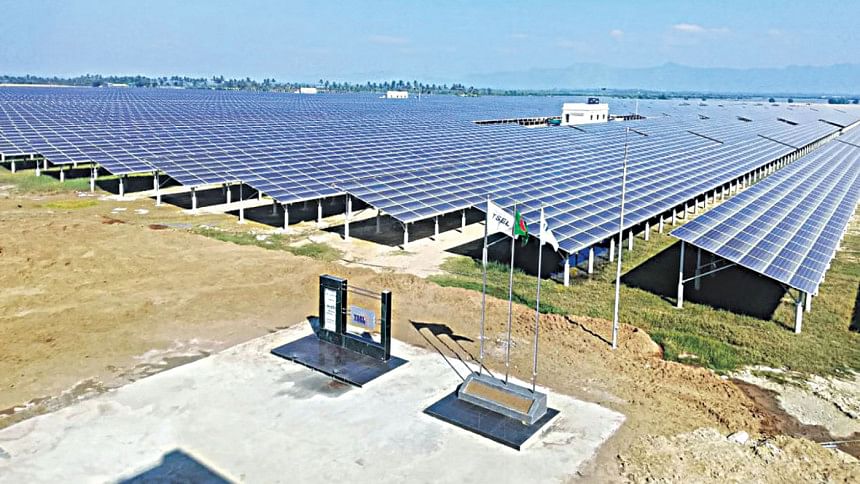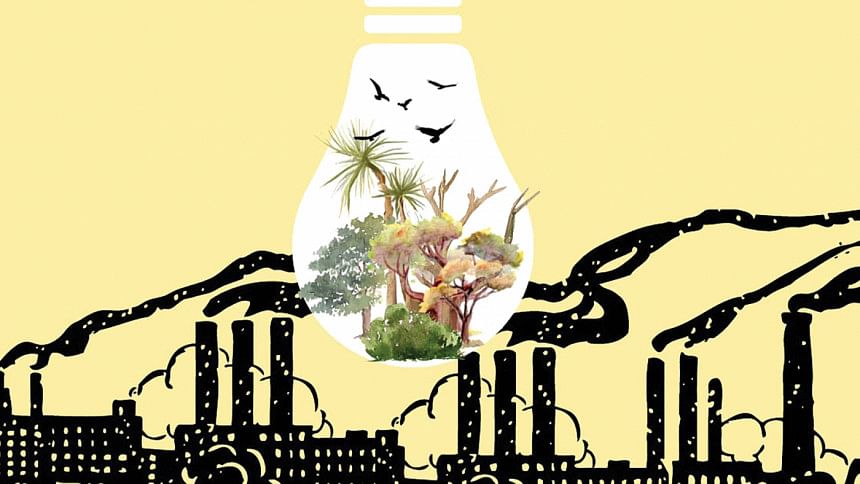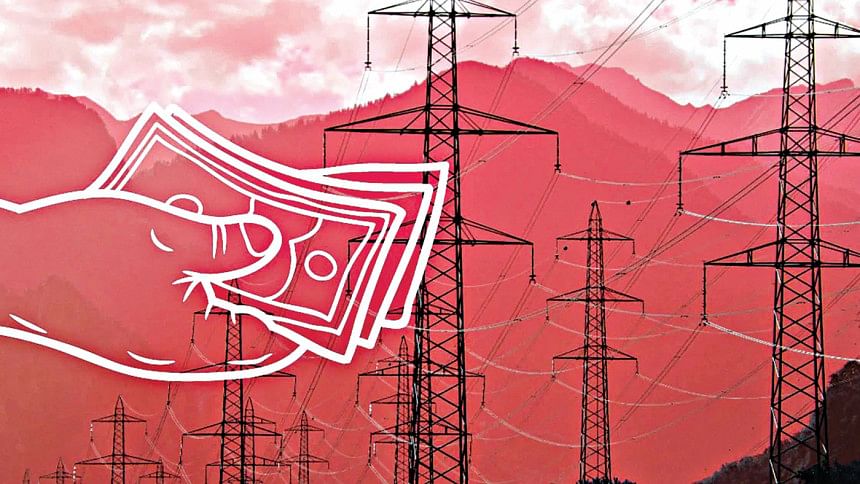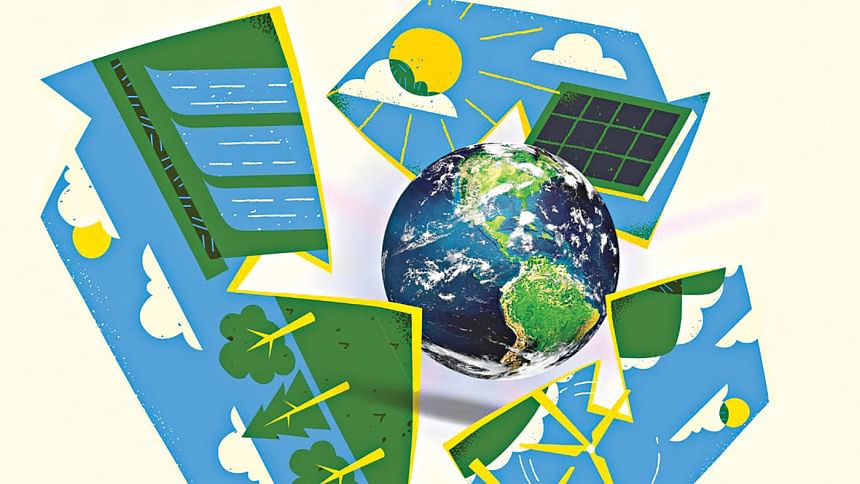Refinancing sustainable energy projects in Bangladesh

Bangladesh has not seen much success with refinancing of sustainable energy. The agency created to promote sustainable energy—Sustainable and Renewable Energy Development Authority(SREDA)—has not been able to provide momentum to the development of sustainable energy. Wider deployment of sustainable energy in an era of climate change concerns countries aspiring to achieve the Net Zero target by 2050 and it is an urgent and crucial need.
Information from SREDA's website shows the renewable energy (RE) status in Bangladesh. According to it, solar energy's share of renewable energy is highest at 80.5 percent; the second position is occupied by hydro with 19.1 percent. It is worth pointing out that the hydro plant was built more than 50 years ago and still provides 230 MW of power. The share of wind and biogas/biomass is less than one percent. However, the contribution of the new 60 MW wind power plant at Cox's Bazaar has not been added. The total on-grid installed capacity of renewable energy power generation is less than 3.5 percent of the total grid capacity of approximately 26,000 MW (January 2024); in terms of electricity generated in 2022-23, it is less than one percent. This puts Bangladesh among the bottom 10 percent of countries with respect to renewable energy.
The other component of sustainable energy is energy efficiency and conservation (EE&C). The performance in the promotion of EE&C is equally poor. Since the publication of the EE&C Masterplan by JICA consultants in 2016, very little progress has been made by SREDA. The most important recommendation of the masterplan, i.e., data submission and mandatory audit for the large designated industries has not been started. However, on their own initiatives industries have tried to become energy efficient by installing cogeneration and VFDs. The drive towards EE&C by industries has been propelled more from the need to cope with energy supply shortage rather than a desire to be green. Many export-oriented garments industries under pressure from their buyers have opted for rooftop solar. In these cases, the incentive was a two percent premium received because of RE deployment.
The need for energising refinancing of sustainable energy in Bangladesh is vital. This is not only important to alleviate the energy supply challenges, but also to address the requirement to be compliant with the commitment to GHG emission reduction. The textile and apparel sector in tandem with their buyers and brands must reach Net Zero no later than 2050. Sooner or later the EU will enforce for textiles the Carbon Border Adjustment Mechanism (CBAM), which is a landmark tool to put a fair price on the carbon emitted during the production of goods that are entering the EU. At present it is applicable for import into the EU of energy intensive products such as cement, iron and steel, aluminium, fertilisers, electricity and hydrogen.
It is to be noted that the cost of RE in Bangladesh is high compared to that in similar countries, and nearly double that of India. The principal barrier to wider dissemination of renewable energy especially solar is of course land availability, but the provision of adequate financing at incentivised rates is also a big barrier. The agencies that are supposed to promote and incentivise renewable energy projects have not played their parts well. The Infrastructure Development Company (IDCOL) has been successful with their solar home systems (SHS) programme but that again was due to the poor supply of electricity in the rural areas. Rural people felt that SHS was their only hope to get electricity for a long time to come. The quick 100 percent rural electrification has been a great boon for the rural people, but that also meant that more than 6 million SHS are now abandoned. IDCOL's programmes of rooftop solar, solar irrigation and mini-grids have seen limited success.

Since the promulgation of the Renewable Energy Policy in 2008, in the last 15 years solar has reached only 970 MW, which includes 370 MW of SHS, now lying idle. The on-grid solar PV achievement is only 602 MW, which is extremely low by any standard. Soon after the start of the Ukraine-Russia crisis, all experts advised the government to increase renewable energy penetration, but the slow pace of solar power plant addition has disheartened all. The government keeps on reassuring us that nearly 10,000 MW of proposals are on the table, but it is incomprehensible why these are not taking off despite the fact the government is offering very favourable tariff.
Sustainable financing for green projects started in 2009 with the Bangladesh Bank creating a revolving fund of Tk 200 crore, which has been increased to Tk 400 crore. Since then, policies, guidelines and list of products that can be financed have been added. In addition to the financing available from the Bangladesh Bank, there are several bilateral and multilateral funds available for investors of green projects. The table below shows the funds available for financing green projects. Considering that the Norwegian fund of $1 billion will be divided among eight countries, the total available funding for Bangladesh is less than $1 billion. Moreover, this funding is for all types of sustainable projects spread over 3-5 years.
Data from the Sustainable Finance Department of the Bangladesh Bank clearly shows that the bulk of sustainable finance in FY22 went to green buildings, and sustainable energy funding constitute only 26 percent of the total refinancing activities in Bangladesh. Other activities have received funding deal more with sustainable environmental management rather than sustainable energy.

The limitation of adequate funding or financing available for sustainable energy is not the only barrier in its wider uptake. Bangladesh still offers very favourable tariffs for utility scale solar at Tk 10.7/kWh. Even though the devaluation of the taka against the dollar has eroded most of the incentive, the existing tariff is still conducive to investment. Since the programme was started nearly a decade back, most foreign investors have complained about land availability. Many reputed international investors have backed away after years of effort to procure land. Being a densely populated country with high requirement for agricultural land, the scarcity of land is obvious. The problems arising out of high land requirement for renewable energy projects especially solar PV is well recognised. Haley Zaremba in an article for Oilprice.com titled "Navigating the Land Crunch in Renewable Energy Expansion", mentions the following three issues:
i) Utility-scale solar and wind farms demand large land areas, creating land-use challenges as undeveloped land becomes scarce.
ii) To meet climate goals, massive amounts of land must be dedicated to renewable energy projects, raising concerns about competing land uses for agriculture and wildlife preservation.
iii) Balancing ecological, energy, and food needs is crucial, with mixed land-use solutions and technological advancements as potential paths forward.

As may be appreciated all these three issues are relevant and important for renewable energy development in Bangladesh. Even though there are studies that have reported unutilised or "khas" land, these assertions are not rooted in firm studies. For example, reports have mentioned usable land on both sides of many rivers for solar PV power plants. Theoretically this may be correct, but the actual usability has to be confirmed through rigorous studies of soil condition, present use by local people, vulnerability to flooding, and security risks. The principal reason behind the large success of the Indian solar PV programme is the availability of unutilised land. Indian solar PV programme is oversubscribed even at tariffs half those in Bangladesh.
For reasons of food security, the government does not permit renewable energy projects on agricultural land. While one can understand the rationale behind this restriction, it is unduly restrictive. Wherever project developers try to procure land for solar parks, they encounter agricultural land. The fragmented nature of land and the propensity to utilise every inch of land for agriculture means that it is difficult to get a contiguous piece of land for a project beyond 50 MW. If the government permitted 25 percent of the land for a single solar project to be agricultural, many more projects could be financed. Just one percent of the total agricultural land of Bangladesh can generate 50,000 MW of power. The benefit to the nation is five times more when land is used for energy compared to food. The loss of food crops can easily be compensated by preventing food spoilage. Also, land encroachment due to various reasons is reducing agricultural land every year. Since we need to import both food and energy, devoting land for energy will have a beneficial impact on foreign currency reserves.
The third point made by Haley can circumvent the land availability issue. Agrivoltaics which is the simultaneous use of the land for crops and solar PV can truly revolutionise the harnessing of renewable energy.
Of course, such agriculture will be limited to crops which can tolerate shade such as tomatoes. The other promising area of solar PV application is floating solar. Floating solar power plants of hundreds of MW capacity are being constructed worldwide. Here again, the project sizes cannot be very large in the context of Bangladesh, but literally hundreds of such projects can be implemented. All these non-traditional applications have one big drawback; these increase the price of generated electricity.
The government has announced its RE goal as 40 percent of RE generation capacity by 2041. Shafiqul Alam of the Institute for Energy Economics and Financial Analysis (IEEFA) has remarked: "On a rough estimate, achieving a 40 percent renewable energy capacity target could cost Bangladesh between $1.53 billion and $1.71 billion annually from 2024 through 2041, not including the cost of grid modernisation and storage facilities." The funding available for sustainable energy projects falls far short of the requirement. However, the Bangladesh Bank's fund is a revolving fund, which will get replenished and many of the foreign funding is specifically for sustainable energy, the funding provision is not really the barrier. Even the available funding is not being fully utilised because of the many barriers holding back the expansion of renewable energy in Bangladesh. The following lists some of these barriers towards greater refinancing of sustainable energy projects.
i) Utility scale solar power plant developers are required to build the Transmission line to the nearest sub-station.
ii) NBR has started to impose 26 percent, 38 percent and 58 percent import duties on solar panels, inverters and solar DC cables, respectively.
iii) Foreign investor unfriendly rules such as lock-in period, profit repatriation, etc.
iv) Elaborate permitting requirements.
These barriers need to be urgently addressed for greater refinancing of RE projects. For addressing the land issue, Bangladesh Power Development Board (BPDB) needs to move to an auction system from the prevailing bilateral negotiation following unsolicited bids. To initiate the auction process, BPDB first needs to procure the land or provide government land. Systematic removal of barriers and greater availability of low interest funds can open up greater refinancing opportunity of sustainable energy in Bangladesh.

 For all latest news, follow The Daily Star's Google News channel.
For all latest news, follow The Daily Star's Google News channel. 



Comments